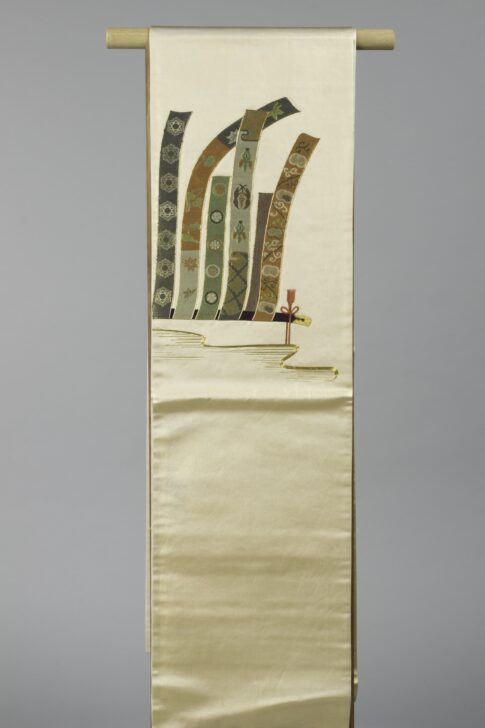Obi
Japanese

Description
Subject Matter:
This is a fukuro obi in otaiko gara.
The Kicho screens are curtain-like room dividers used to provide privacy within interior spaces, depicted in the Tale of Genji Scroll. The Tale of Genji is a classic work of Japanese literature written by the noblewoman and lady-in-waiting Murasaki Shikibu during early 11th century.
Fukuro Obi is double-layered single sided obi in which two separately woven surfaces and back pieces of cloth are stitched together. This type of obi is typically only worn at weddings or other formal occasions.
Gara refers to the orientation, arrangement, and surface area of the patterns and pertains to a specific trend and obi tying style. The patterning in the Otaiko gara type is minimal. A few concentrated spots of patterned motif lie on the obi while the rest is left blank. This style was invented during the Edo period (1615-1868) by the female entertainers in Fukugawa, an entertainment district in present-day Tokyo.
Physical Description:
(the obi is displayed up-side down in the image)
PD: Peach and sparkly gold fukuro (single-sided) obi with embroidered and interwoven gold and various orange and green-shaded Kicho screen motifs with star of david-like designs, autumnal foliage, wisteria, cherry blossom, karakusa, and cloud motifs.
Usage Rights:
If you are interested in using an image for a publication, please visit https://umma.umich.edu/request-image/ for more information and to fill out the online Image Rights and Reproductions Request Form.